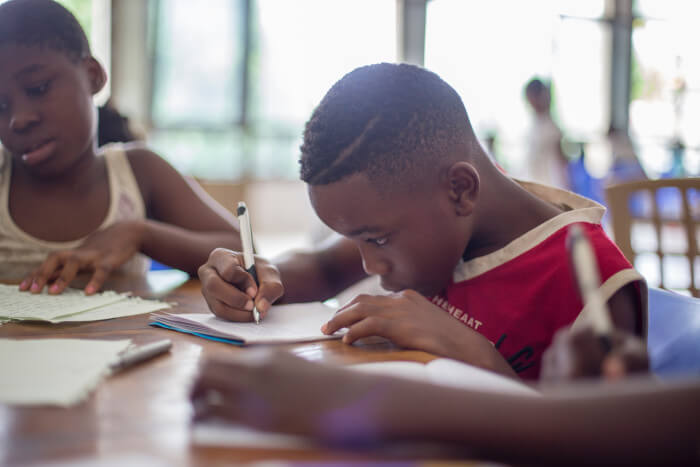Classroom management is something almost every teacher will struggle with from time to time. Whether you’re a brand-new teacher, a veteran, or somewhere in between, students will often challenge you in the classroom.
So, how do you as a teacher create a welcoming environment while also maintaining a structure that’s conducive to learning? How do teachers keep students engaged, on task, and respectful? These are questions we continue to work with as we hone our craft.
To that end, here are a few classroom management tips to help you create a classroom environment that works for both you and your students.
How to improve your classroom management

1. Plan, plan, and plan. And then plan some more just in case.
There are very few teaching moments that are more terrifying than delivering a lesson that you thought would span a whole hour, only to glance at the clock and see you still have thirty minutes left. Your students stare at you, looking for guidance. You start to ask yourself, “What am I going to do with these kiddos now?”
When students sense that there’s downtime and doubt your sense of direction, they’ll find a way to fill it with off-task behavior and chatter. To avoid this downtime and the possibility of a full-class meltdown, fill your lesson to the brim. And then add an extra “just in case” activity that’s ready to go when you need it.
When you make a plan, think through the details. Don’t just think, “First, we need to check the homework.” Consider how you’re going to check it. Will you project the answers on your smart board? Do the students need to correct their answers? Will you call on individuals? Will they discuss their answers with a partner? Will you collect their worksheets? If so, how? There are many decisions to be made, but each one you nail down will help make your classroom a more stable learning environment.

2. Engage students in the learning process.
This might seem like a no-brainer, but sometimes lessons are just not interactive and engaging. The more they are, though, the more likely students are to stay on task and contribute positively. Make sure lessons have a variety of methods and groupings. Let students have time with a partner or a small group and also time to reflect as an individual learner. Mix things up with some movement or brain breaks. Engagement can be an easy fix for behavior problems in classrooms.

3. Establish clear classroom routines from the first day of school.
Let students know what your expectations are and teach these expectations from day one. Students should understand what your procedures are for everything in the classroom. Where should they submit papers? What’s the policy for restroom and water breaks? Be sure to also set up a routine where students know that they may not pack up their materials early or line up at the door until you say so. And if you’re a teacher who doesn’t want cellphones in the classroom, collect them from students who have them out. Let students know that they need to be respectful of each other, of the teacher, and of the classroom. If students know what’s expected of them, they’ll be more likely to behave the way you want them to in class.

4. Establish a system of rewards and consequences for behavior.
If students are doing what they’re supposed to, take notice and compliment them. Encourage as many students as you can to continue to behave the right way in class with a healthy balance of positive reinforcement. Students of all ages appreciate stickers and candy (if you feel inclined to award them in class).
But you shouldn’t just reward good behavior — if a student is misbehaving, you should have a series of clear consequences established (this goes along with #3 above). If a student is tardy, maybe he’ll have to stay after school for a couple of minutes and make up for that lost time. If a student is speaking during another student’s presentation, she may be asked to briefly apologize. And if a student is distracting others, perhaps he or she will have to work alone when others are granted group time.
Bottom line? When students understand the consequences of their actions, they are less likely to misbehave.

5. Take time to really think through your seating arrangements.
Assigning seats might seem like overkill to some teachers, but many problems can be solved by simply adjusting where students sit in your class. If two students keep chatting, separate them. If someone is distracting others, move that student away from their peers. Place students in different corners of the room so they are not right next to their buddies. And be sure to seat students who need special attention and focus close to the front of the room so you can tap their desks discretely and bring them back into the class activity.
Additionally, when students work in groups and partners, think about how you would like them to be paired. Well-behaved classes might be able to choose for themselves, but in other classes, prepping groups and partners might make your life (and your students’ lives) a whole lot easier.

6. Move throughout your classroom while you teach.
Once you have an engaging lesson and the students are in the seats you’ve chosen, move around the room — try not to plant yourself in one spot. As you are teaching, move from corner to corner of the room and up and down rows to have some proximity to each student in the classroom. This helps both you and your students because you can see if they are following along, and students who are more timid will feel more comfortable asking questions when you are right next to them. Your movement also keeps students on their toes and more likely to be on task and engaged.

7. Get to know your students.
The better you know your students, the easier it will be to manage your classroom. The adage is true: Students don’t care what you know until they know that you care. Ask your students about their lives. Attend their games and concerts, if appropriate. Greet them at the door, and let them know you’re excited to see them.
At the start of the year, maybe give your students a questionnaire and ask them about their lives and learning preferences. This might give you some insight about your students from the beginning so you can teach them better. Remember: Students appreciate the effort teachers make to get to know them and will often behave better for those teachers in class.

8. Get parent and administrative support as needed.
It takes a village to raise a child. If you need help, reach out to parents and administrators. Send an email to parents early in the year when you catch students doing well; this will make it easier if, later in the year, you need to send a follow-up about an issue that comes up. That way, you’ll already have an established, positive connection. Feel free to call home and ask if the parents have advice about how to keep their child on task and engaged in class; they might have some valuable hints and information to share with you. Administrators can also help — sometimes, they have educational tools they can provide to help support you in discipline and classroom management.

9. Form a supportive group of teachers.
Create a PLC (professional learning community) of teachers to serve as a sounding board for advice in your classroom. Make sure the group is positive and helpful; it shouldn’t just be a room full of complaints — rather, it should be teachers trying to actively solve classroom management issues together. Take the time to observe these other teachers (and have them observe you.) Gather insight from what you see happening. If it’s feasible, observe some of your students in another setting. Perhaps what another teacher is doing with a student might work for you.
Classroom management ideas + you = a great learning environment
Classroom management can be a challenge, but it doesn’t have to be. With thorough planning, clear routines and consequences, and a supportive team, you can have an environment that you and your students will enjoy.
Photo credit: Jeffrey Hamilton; NeONBRAND; Green Chameleon; Santi Vedrí;
Classroom Management


